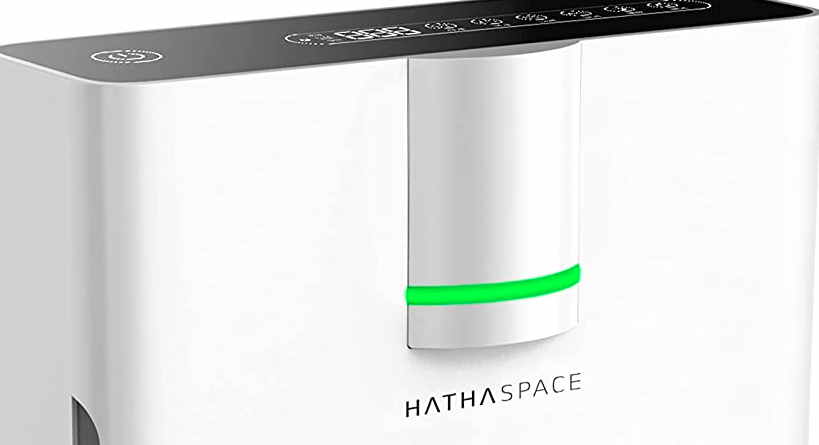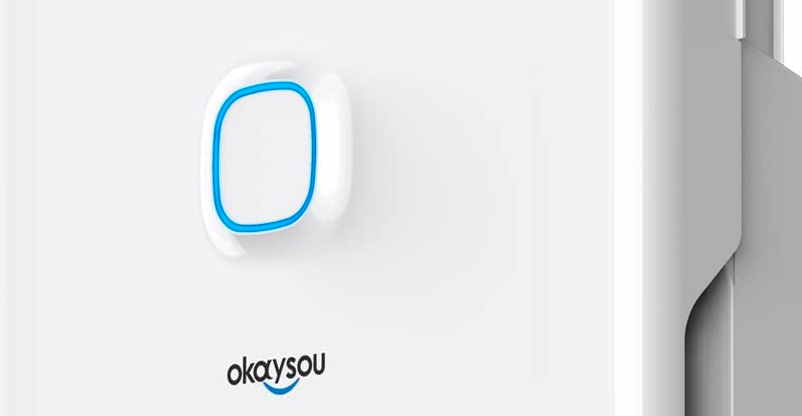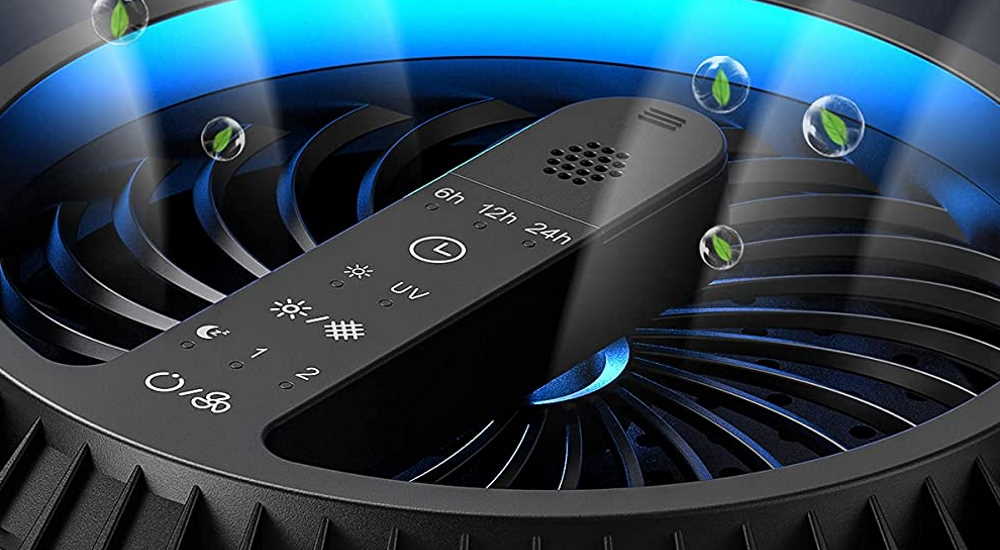Bring room air purifiers into your home to replace stale air, reducing the chances of health issues caused by indoor pollutants. Eliminate several types of indoor air pollutants for a fresher and healthier environment. What is the best 1000 sq. ft. room air purifier available in the market?
There are so many health benefits to clean air, not to mention all of the ways that dirty air can negatively impact your life. Getting an indoor air purifier will leave you feeling healthier and happier. Purifiers can refresh stale air, reduce the chances of health issues caused by indoor pollutants, and eliminate several types of infectious agents.
A room air purifier is a device designed to improve indoor air quality by filtering out harmful particles, pollutants, allergens, and odors. It works by drawing in air, passing it through one or more filters, and releasing clean, purified air back into the room. Here’s everything you need to know about room air purifiers.
How It Works
Air Intake: The air purifier draws in the air from the room through vents or intake grilles.
Filtration Process: The air passes through a series of filters that capture different types of pollutants, such as dust, pollen, pet dander, smoke particles, and bacteria.
Air Release: After filtering, the purified air is released back into the room, improving the overall air quality.
Types of Filters in Air Purifiers
- HEPA (High-Efficiency Particulate Air) Filter: This is the most common and effective type of filter, capable of trapping 99.97% of particles as small as 0.3 microns, including dust, pollen, and pet dander.
- Activated Carbon Filter: These filters are excellent at removing odors, volatile organic compounds (VOCs), and smoke. They work by adsorbing gases and chemicals from the air.
- UV-C Light: Some air purifiers use UV-C light to kill bacteria, viruses, and mold spores. This feature is often used in combination with other filters.
- Ionizers: Ionizing purifiers release negative ions into the air, which attach to positively charged particles (like dust or smoke) and make them heavier so they fall to the ground. However, ionizers can produce ozone, which may irritate respiratory conditions in some people.
- Pre-filters: These are used to capture larger particles like hair and dust before the air passes through the primary filters, increasing the efficiency and lifespan of the other filters.
When To Use Room Air Purifier?
Air purifiers use a filter, or multiple filters, to capture pollutants and particles as air circulates through the machine. The clean air is pushed back into the living space. Filters need to be replaced regularly to keep the machine running efficiently.
Benefits of Using a Room Air Purifier
- Improved Air Quality: Air purifiers can remove allergens, dust, smoke, and other pollutants, creating a cleaner and healthier indoor environment.
- Allergen Reduction: They are especially beneficial for individuals with allergies or asthma, as they help reduce common allergens like pollen, mold spores, pet dander, and dust mites.
- Odor Removal: Air purifiers with activated carbon filters help eliminate unpleasant odors from cooking, pets, or smoke, leaving the room smelling fresher.
- Healthier Breathing: Removing particles like bacteria, viruses, and volatile organic compounds (VOCs) can contribute to healthier indoor air, which is particularly important for individuals with respiratory issues or compromised immune systems.
- Prevention of Mold Growth: By reducing moisture in the air, some purifiers help prevent mold growth, especially in humid climates.
Pet owners should use it
If you’ve got a pet in the house, you need an air filter. Cat and dog allergens are common offenders that can build to dangerous levels. But don’t forget that animals may also bring pollen into the house with their fur. It can be stowed away until its next visit to your nose. A good air filter may not eliminate these health risks, but it will certainly reduce the amount of dust, dander, and other things you breathe in at home.
If you have asthma or allergies
If you have allergies, and particularly if you’re allergic to mold or animal dander, an air purifier in the home might reduce the level of allergens enough to improve your symptoms. Sometimes they can be helpful for people with asthma, though not always.
1000 sq ft Room Air Purifier
Although there are variances, estimates from leading real estate firms seem to be about 1,600 square feet for a home. The general recommendation for air purifiers is that you need 2 air changes per hour. This means if you have a 1000sqft home, you need a 500 sq. ft. or larger purifier. Maybe you should consider using an air purifier for a large room of 1000 sq ft.
On the other hand, if you have a bathroom fan exhaust, there will be no need for the air purifier to work in that space.
Finding an air purifier for cleaning large spaces of 1000 sq ft or more can be a difficult task. An air purifier needs to have a large fan and multiple types of filtering systems to effectively clean a space. The ability to filter out mold and mildew is key, so look for the right combination of filters.
Air purifiers are used primarily to remove all types of allergens and mold from indoor air for the purpose of improving your health. Mold particulates, smoke, and bad odors can be removed from indoor air by the filtration system that includes a group of different filters.
Mold, smoke, and bad odors can be removed from the air by the filtration system that includes a group of different filters. Let’s see what can be found in the U.S. market.
HATHASPACE Smart Air Purifier 2.0

This air purifier comes equipped with a 5-stage true HEPA filtration, washable pre-filter, laser air quality sensor, and a PM2.5 real-time air quality monitor. It utilizes energy-efficient AUTO mode to automatically adjust fan speed for your air quality needs and reduces your energy bill.
Okaysou Smart Air Purifier

An air purifier that removes allergens, toxic chemicals, dust mites, pollen, pet dander, and smoke in rooms up to 1,000 sq. ft. UV Cell mode is perfect when the air is free of organic contaminants but mold spores or microbes are present. This air purifier for a 1000 sq ft room keeps the air clean and fresh.
Best 1,000 sq. ft. Room Air Purifier
When choosing an air purifier for a 1,000 sq. ft. room, it is recommended to choose one that can do the job in less than 20 minutes. You need a purifier with CADR (Clean Air Delivery Rate) of 450 CFM to clean air for a 1,000 sq. ft room in 20 minutes. It takes 550 CFM and 800 CFM to clean up the air in the same room for 15 minutes and 10 minutes, respectively.
However, a higher CADR value corresponds to higher power consumption, louder noise, and a bulkier purifier unit. A portable air purifier with a CADR of 550 CFM may consume around 110 watts of power, produce 60dB of noise and weigh around 45 lbs. If you prefer a more compact 250-CFM air purifier unit, it may take more than 30 minutes to clean up a 1,000 sq. ft. room. Whatever brand and model you choose, be sure that the air purifier unit comes with a washable TPA filter that can capture particles smaller than 0.015 microns, which is enough to block microorganisms as small as a virus. Because the air purifier unit will run for 12 hours per day or more, you may consider getting a more efficient unit with a built-in sensor that controls the fan speed, depending on the current amount of pollutants in the air.
Best 2,000 sq. ft. Room Air Purifier
When choosing an air purifier for a 2,000 sq. ft. room, it is recommended to choose one that can do the job in less than 20 minutes. You need a purifier with CADR (Clean Air Delivery Rate) of 800 CFM to clean air for a 2,000 sq. ft room in 20 minutes. It takes 1,100 CFM and 1,600 CFM to clean up the air in the same room for 15 minutes and 10 minutes, respectively.
These units consume more power and are louder and heavier than the ones you need to purify a 1,000 sq. ft. room. An air purifier with a CADR of 1,200 CFM may consume around 200 watts of power, produce 65dB of noise and weigh around 100 lbs. Despite its larger size, such an air purifier unit must be portable with four locking wheels and a modular design. Because high-performance air purifiers may cost more than $2,000 each, it makes more sense financially, if you can move them easily to different rooms. A high-performance air purifier is not a cheap investment, so be sure that it is equipped with multi-stage air filtration. The first level of filtration should be a particle filter that captures pet dander, dust, pollen, mold, and other allergens, and a carbon filter will absorb VOCs, fumes, smoke, and heavy odors. Lastly, it should have a medical-grade HEPA filter that scrubs the indoor air free of small organisms like bacteria and viruses.
Choosing the Right Air Purifier
- Room Size: Air purifiers come with different coverage capacities. To ensure efficient purification, choose a model that matches the size of your room. The manufacturer’s specifications will tell you the area the purifier is designed to handle (usually measured in square feet).
- Type of Pollutants: Consider the specific pollutants you want to target. For instance, if you need to remove pet dander or pollen, a HEPA filter is ideal. For odors and chemicals, an activated carbon filter is more effective.
- Noise Level: Some air purifiers can be noisy, so if you plan to use it in a bedroom or other quiet area, check the noise rating (measured in decibels).
- Maintenance: Check how often the filters need to be replaced, as this affects the long-term cost of using the purifier. HEPA and activated carbon filters typically need replacing every 6-12 months, depending on usage.
- Energy Efficiency: Look for energy-efficient models if you plan to run the air purifier continuously. Some purifiers have an energy-saving mode to help reduce electricity consumption.
Few words to end
As said before, these both are 1000 sq. feet air purifiers and are designed for large rooms. Choose the appropriate model, based on the details we have provided in this short review. Keep the air inside your home clean and healthy & mold-free. If you own a large living space, choose the best air purifiers for rooms, for at least 1000 sq ft.
A room air purifier is a useful device for improving indoor air quality by removing allergens, dust, smoke, odors, and other pollutants. When choosing an air purifier, consider the size of your room, the types of pollutants you need to address, and the maintenance required. Regular use of an air purifier, along with proper filter maintenance, can significantly enhance the air you breathe and promote a healthier living environment.
